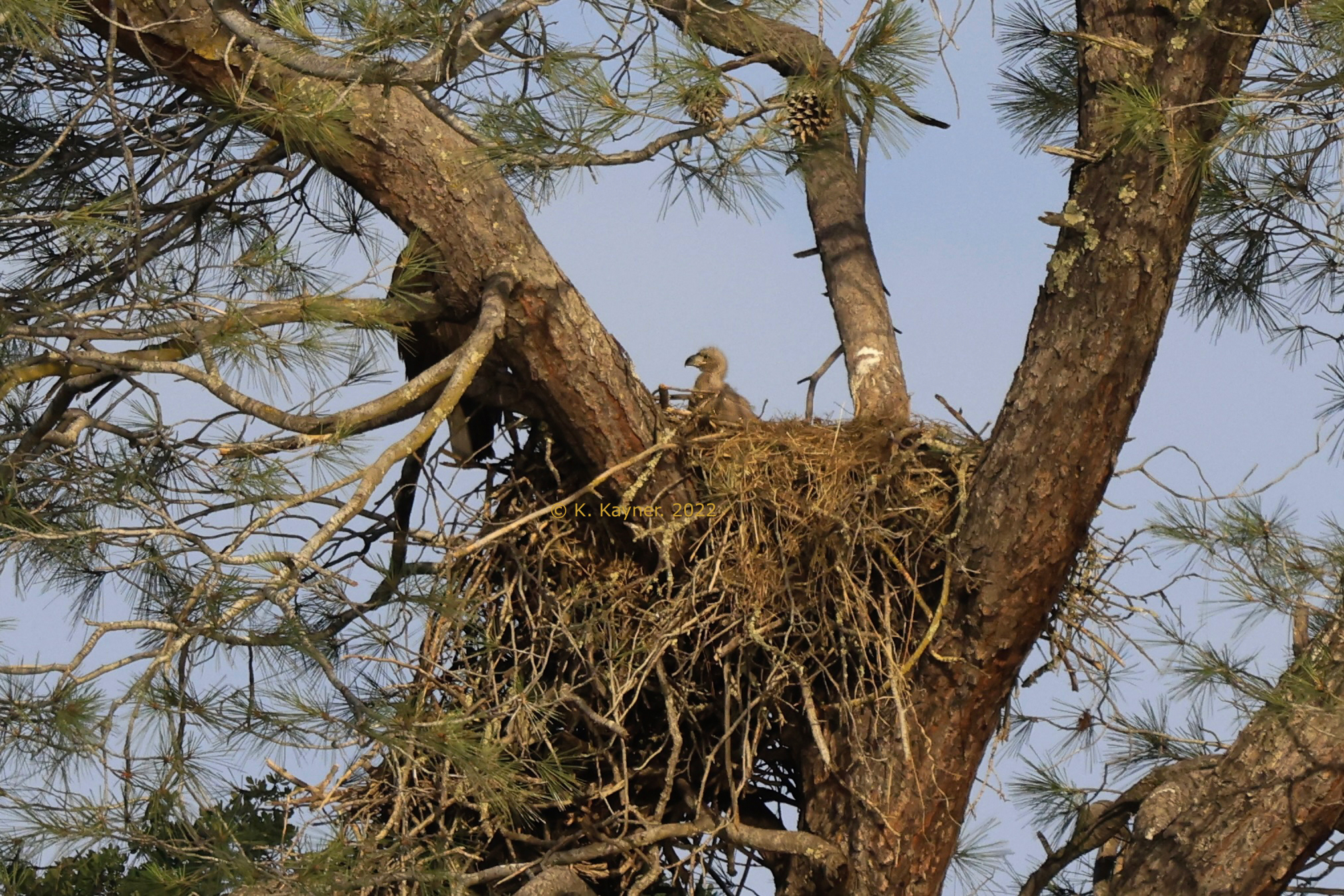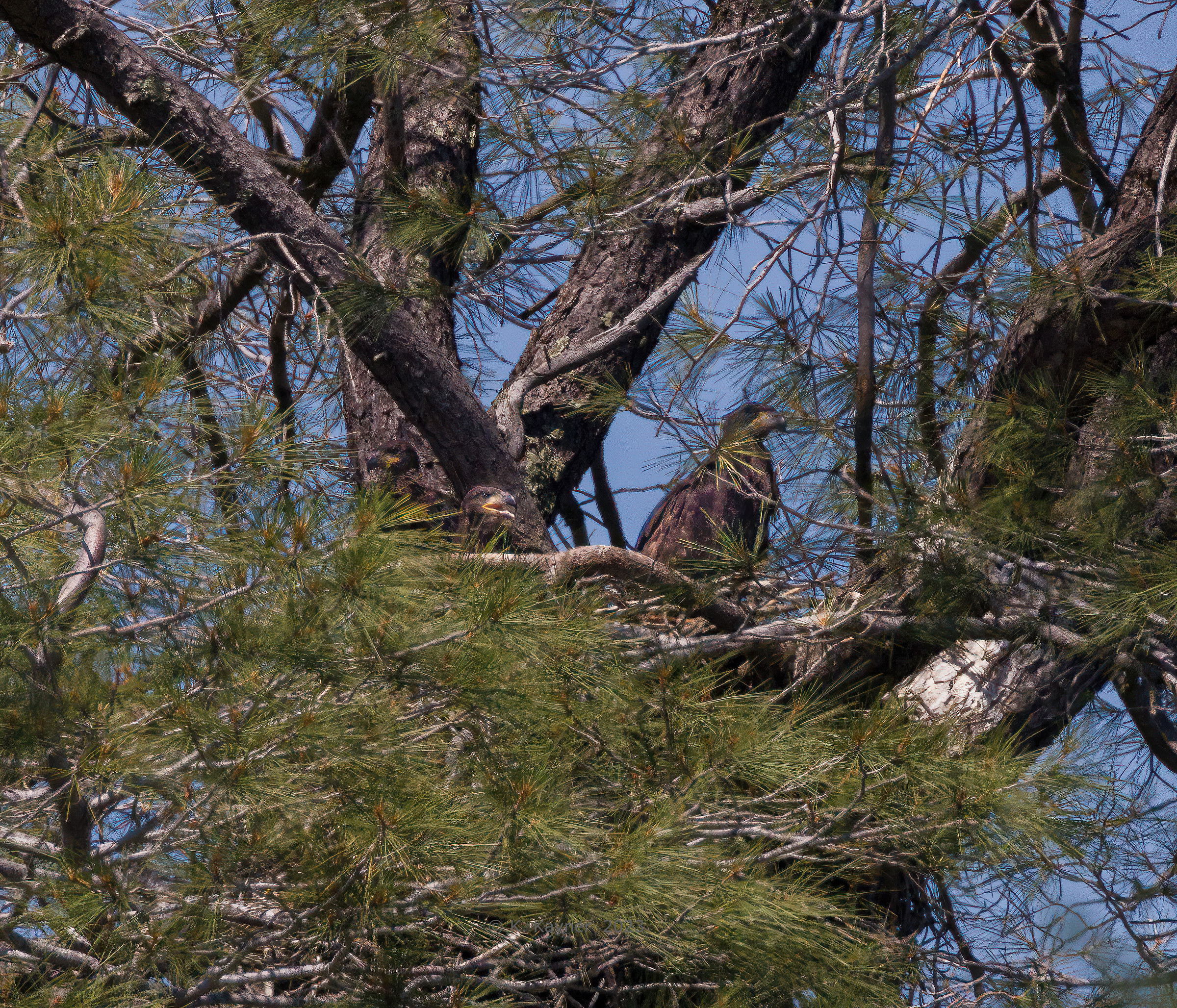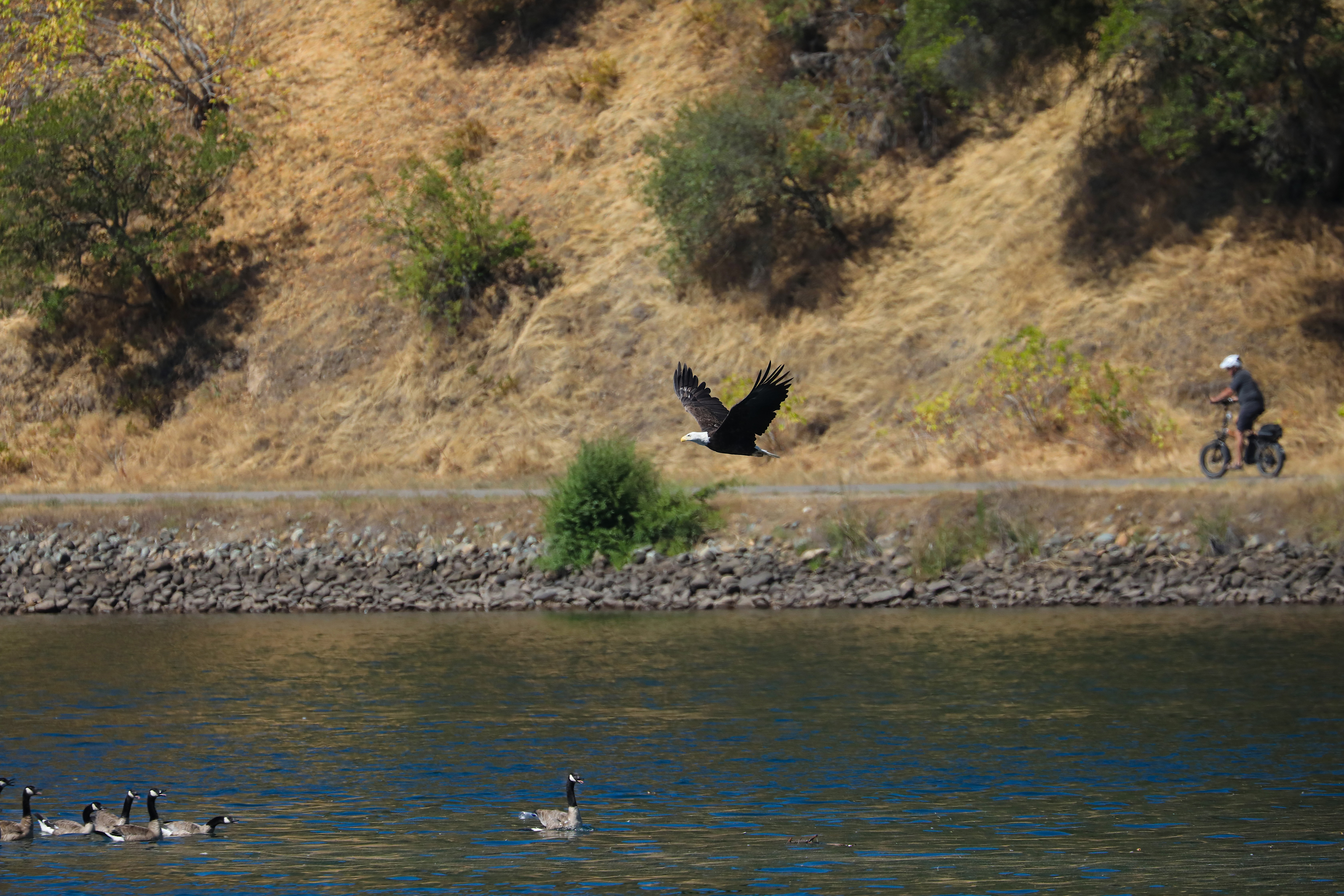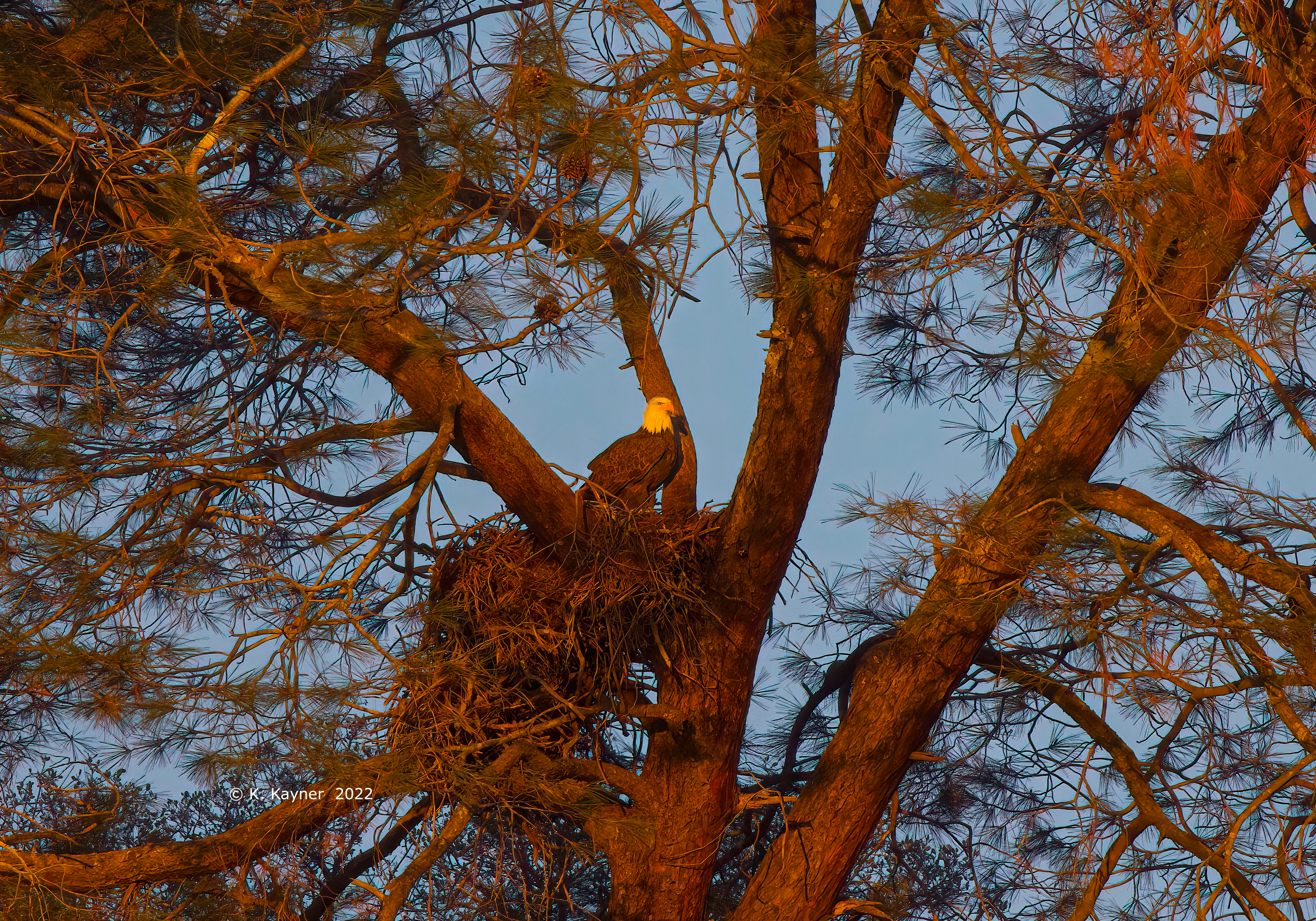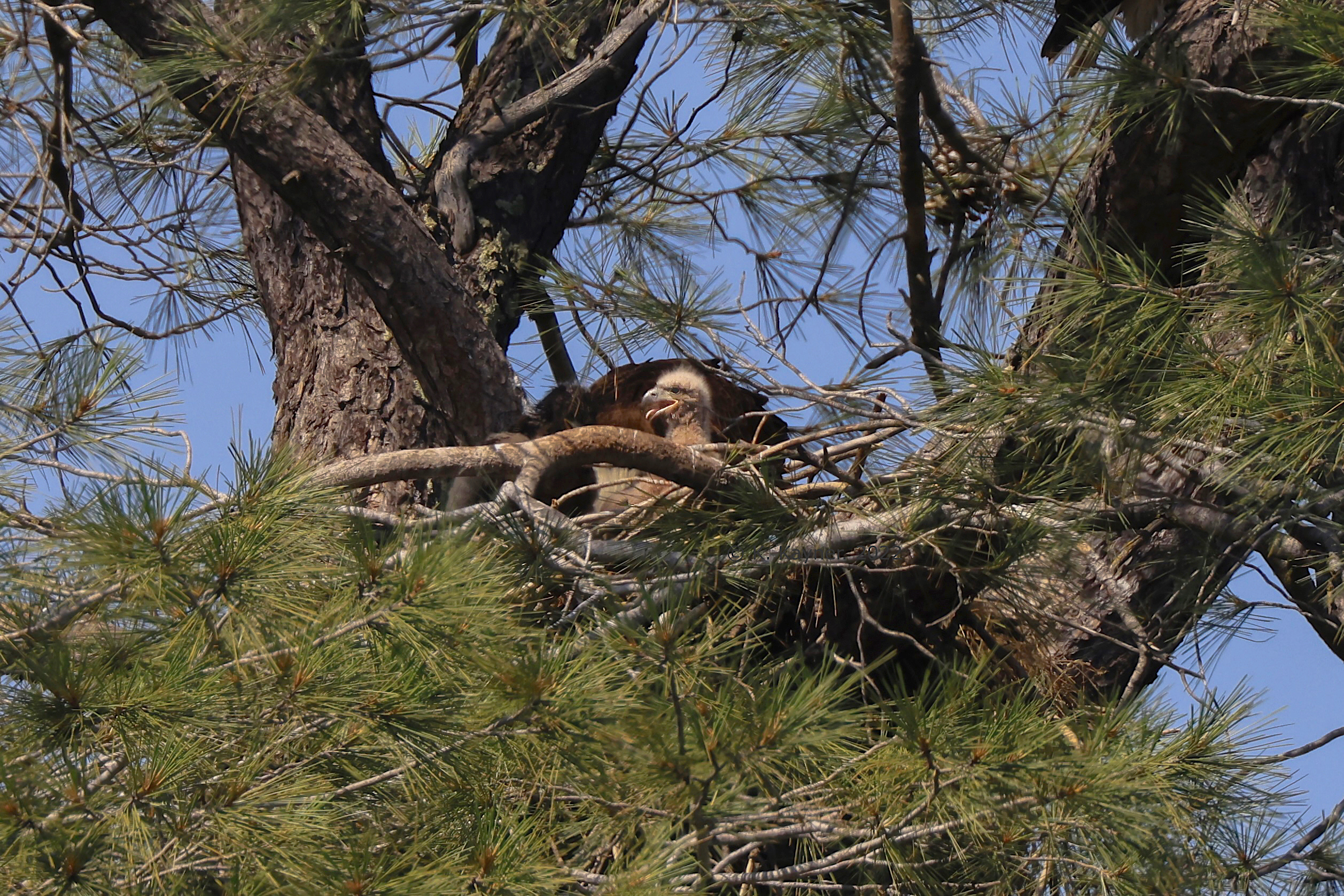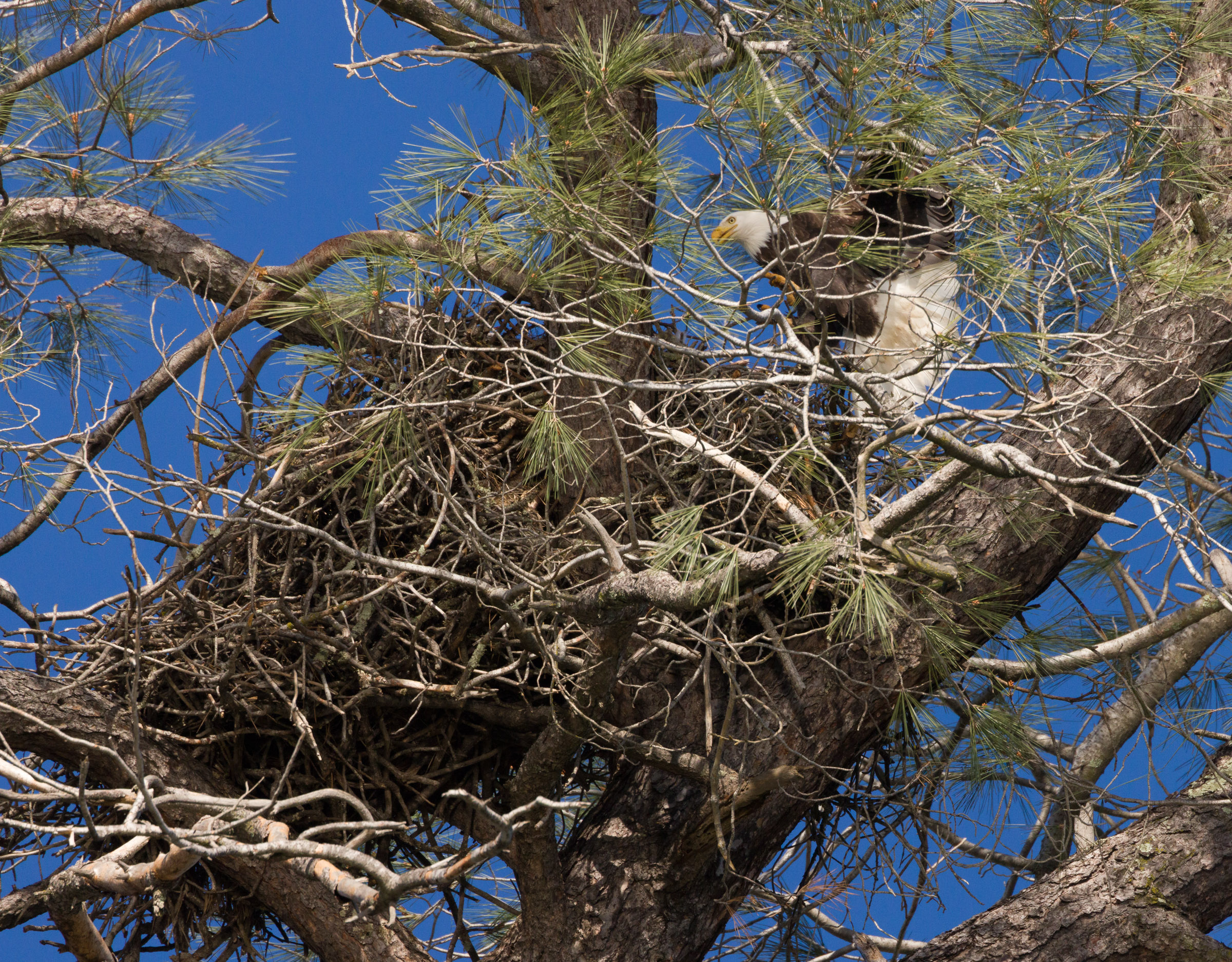About This Pair
We are lucky to have several pairs of bald eagles that call our park their home. Most are located in remote areas along Folsom Lake, but one pair, which nest in an area adjacent to an urban environment along Lake Natoma, have been actively monitored since 2017, and FOLFAN has been part of that effort. The eagle pair, known by docents as Mama and Papa, have had 16 successful hatches and 15 successful fledges since 2017, including three healthy fledglings last year!
Locals will tell you that prior to 2017 the female had a nest with another male a bit farther upstream but that the nest tree was lost during a landslide that took down the tree with the male sitting on the nest containing one egg. Unfortunately, he did not survive. FOLFAN can’t substantiate this story.
Mama and Papa’s nest tree is a grey pine which is situated at the top of a bluff and which leans out over the bluff. At the bottom of the bluff is the shoreline of Lake Natoma, so these two eagles are very close to an excellent prey source. When feeding their young, they mostly bring in fish, but it is not uncommon for them to supply snakes, waterfowl, and small mammals to their young.
Nesting season in this part of California follows this typical pattern:
- Adults return to the nest in October to begin rebuilding their nest (nestorations!) and begin their mating ritual. Note that the female has chosen not to leave the area for the past two years.
- Eggs are laid approximately mid-February.
- Hatch happens approximately mid-March.
- Fledge happens early to mid-June.
- Fledglings leave the area sometime in July.
Although we don’t give the eagles “pet” names, we have named several trees in the area that are used during the nesting season. Across the lake and about 2000 feet upstream is the “Love Tree” where the adults have been observed mating. (They’ve also been observed mating near a bakery in Old Town Folsom, but that’s another story…) On the same side of the lake as the nest tree and about 150 feet upstream is the “50-Yard Tree” where the adults are often seen roosting when not on the nest. Previous years’ sub-adults who come back to the natal area have been observed in this tree as well, after being “escorted” away from the nest tree by one of the adults. About 1500 feet downstream of the nest tree on the same side of the lake is the “Feeding Tree” where the adults, usually the male, will deliver food once the young have fledged. This encourages the fledglings to eat outside of the relatively flat bowl of the nest and to learn how to balance on a branch while gripping the food and bending over to eat.
Once the young fledge, it is not uncommon to observe them soaring overhead with the turkey vultures that frequent the area. The vultures use thermals along the bluffs to soar and gain altitude. The fledglings seem to learn this technique from them. Of course, the fledglings are also looking for easy food and will follow the vultures to carrion where they can easily intimidate the vultures, making them leave the food behind.
Because this adult pair have built their nest in an urban setting, they are relatively accustomed to human activity. They have been observed landing on cobble bars in the lake near kayakers and they seem unconcerned with bicyclists, horseback riders, hikers and joggers that use the trails adjacent to their nest tree. They are watchful, but generally unconcerned.



